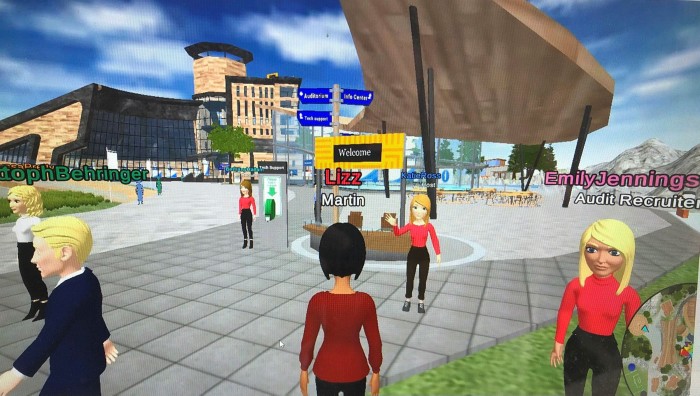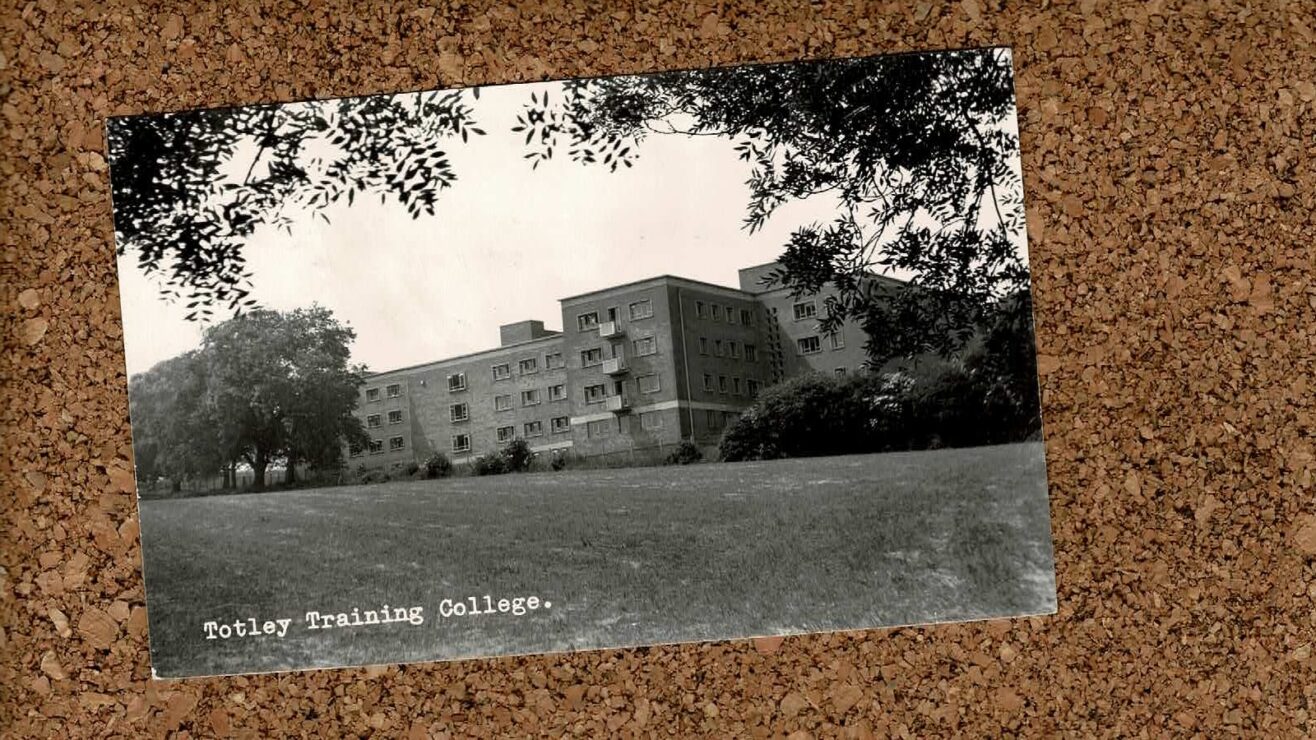So the bet is on. In England, all of the legal restrictions are coming off – and the problem of deciding how to reduce the spread of Covid amongst students and staff, if that is still a problem, is now very much for universities to own.
The Westminster government’s “COVID-19 Response: Summer 2021” reads as follows:
The Government will change the controls that apply in higher education institutions to maintain a baseline of protective measures while maximising attendance and minimising disruption to children and young people’s education. There will be no restrictions on in-person teaching and learning in universities. The Department for Education will shortly set out more detail and publish new guidance for arrangements in education settings from step 4, covering both the summer period and the following term.”
That bit in bold, of course, marks the final removal of the last vestiges of legal cover for arguing that the university can’t deliver what was promised in the pre-contract information because the government says so, or “for public health reasons”.
That’s not to say that there are not plenty of people arguing that there are, in fact, compelling public health reasons for some restrictions to continue beyond July 19th. Indeed, in this interregnum between having to please the libertarians in the electorate and having double vaccinated everyone that wants it, the Westminster government is ploughing ahead with its “low harm, no restrictions” approach despite some obvious risks.
Maybe we’ll get some nudges on the way in which the big “move in” works in September. There might be stuff that’s as daft as Scotland’s “start on time but delay the Freshers’ Disco” and there are still plenty of international arrivals to manage in a sensible way. But the basuc message is clear here – no restrictions on in-person teaching and learning.
I’m less convinced than others that there’s a compelling or viable case for restrictions (beyond the odd big lecture theatre mask mandate) once everyone’s had the chance to be double vaccinated (mid-September, now that dose two is being officially being sped up) – particularly if mutations and variants fail to escape the clutches of immunisation. (If it was up to me, by the way, we’d be allowing 17 year old applicants who turn 18 this and next month to be jabbed now).
And anyway, by September, let’s not imagine that a sector, some of whose academics share fears of isolated but important youth long-Covid cases, can comfortably squeeze through the twin positions of safety and freedom by packing halls to 100 per cent while putting lectures online.
Nightclubs, cinemas, theatres and football stadia will all be open, and will all be full. Even if we are embarking on an experiment in mass vaccination plus voluntary distancing and masking, we’ll almost certainly know much more about whether “living with the virus” in that way is viable in two months’ time. By then universities’ efforts aren’t going to make much difference either way.
If the government’s bet turns out to be a sound one, we’ll need to respond both to prevailing public and political opinion, and the student expectations and needs that present at the time. And whatever we do with lecture theatres, from here a model that already “packs them in” densely looks like it’s about to do that but even more so. Because all things considered, when it comes to student numbers, we could be in for a bumper September.
If it’s true that applications for “panic masters” are up, undergraduate applications are up given the counter cyclical of a recession, they’re up further given the number of 18 year-olds in the market, they’re up further still because of grade inflation (with an intense clustering effect into Russell Group cities), and international numbers are holding up for UG and PG, if nothing else we’re about to see a huge housing crunch in the big student cities.
We are, in reality, going to feel pretty “full” – and students aren’t going to subject themselves to the mental health impacts of voluntary isolation unless they have to. They’re also not stupid. If their lectures are delivered online in the Autumn and they’re travelling in from the neighbouring towns we had to house them in for their seminars, they’re going to know that this was more about banking international student fees and the artificial limit of the seating in a lecture theatre than a “vision” for “blended learning”.
If you’re interested in the fine line between safety and freedom, the real question surrounds how many students you recruit into the traditional “in attendance” model. Forget debates about lecture theatres – this August, should the sector press ahead and fill its boots ahead of the Augar response, or exercise some caution?
I love who I see looking at me
It is often suggested that the UK higher education system has an image problem – and that especially in the run up to a major spending review, it needs to get better at telling its story to the press, the public, policy makers and politicians.
Polling is perhaps more positive than the mood music suggests. A Savata Comres exercise from May has the public believing universities “provide graduates with the skills the economy needs” at 43 per cent positive and 16 per cent negative. “Producing world-leading creative talent for the UK” is 46 per cent positive and 11 per cent negative. And when it comes to “producing world-leading science and technology research”, we’re on 54 per cent positive and just 9 per cent negative.
In fact, on almost everything that local and national proactive press work has been busy promoting the sector over, we’re winning. “Contributing to the national Covid-19 response” is 47 per cent positive against 12 per cent negative. “Supporting local economies by creating jobs and attracting visitors to the area” is 39 per cent positive and just 15 per cent negative. And even “supporting local arts and cultural programmes” runs at 36 per cent plays 12 per cent. Three cheers for our hard working comms professionals.
Oh – and where people have a university in their area, 75 per cent are proud of that fact – with less than 1 in 10 not proud.
Given these numbers – that plenty of other sectors would give their right arm for – it’s hard to understand why it often doesn’t feel that this is the case. Until you remember comments like the one that appeared under our piece on the Student Academic Experience Survey a few weeks ago:
They still don’t get it, regardless of pandemic the fees are paid for a specific item, an education. If you bought a sofa in the pandemic you still expect and should receive a sofa, not half a sofa and a complaint that you are expecting too much. If education is a business it needs to act like one!”
There was an emptiness
In her debate paper for HEPI back in February, former Times education editor Rosemary Bennett reminded us vividly that one of the impacts of the trebling of tuition fees has been that universities are no longer just a policy story, and nor are the rest of the stories they generate confined to “youth of today”/”culture wars” tropes. They have become a consumer story too, both for (grand) parents, recent graduates, students and current applicants:
The sums at stake were large and, as canny consumers, they wanted to know not just what their children’s lifetime earnings would be or what profession they would get into, but what they were actually getting for their money in the three or four years they were on campus”.
As such in many ways, the sector walked straight into the trap that was set for it when the terms of higher education’s tacit bailout deal were agreed in April 2020. Apart from a fancifully overbearing restructuring regime whose terms were so unattractive that borrowing from Wonga would have been preferable, the offer from government was simple – recruit as many students as you can so we don’t have to support them in other ways, and we’ll give you the rhetorical and regulatory support you need to charge full fees.
And then blame you, obviously, when students point out that they’re not getting anything like the full educational experience – justifying a crack down on universities later down the line.
That mistake – of treating higher education as a policy story rather than a consumer issue – was at its most obvious last summer, when panic over deferral, an optimism bias over the duration of the pandemic not shared by our own academics, and a misread of what it is that students and their families think they are paying for translated itself into egregious overpromising over the nature of what would be possible in the year just gone.
The realities of significant youth population migration into high density spaces never designed to be really “lived in” during a pandemic involving an airborne virus were obvious, yet we did it anyway, with all of the mental health and confidence costs that created.
Mix in regular and painful disruption, the realities of delivering cut-back courses through exhausted staff using unfamiliar tech to exhausted students without that tech, game playing and gaslighting over complaints, refunds and compensation, plus a public health strategy focussed on youth sacrifice generated by asking those who stump up for the worst value aspects of the experience – student accommodation – to keep paying for but not even occupy that accommodation, and you have every component of an absolutely disastrous consumer story.
That will almost certainly be why student perception of value for money in the HEPI/Advance HE Student Academic Survey hit an all time low. And it’s also probably why, of all the factors in that Savanta Comres polling, it’s on “providing value for money” where the public is least impressed. And so in some ways, what’s most remarkable of all is that we appear to be about to make exactly the same mistakes all over again.
I think you met me at a strange time and you anchored me
As I said here, there is no doubt that there has been both a herculean effort to keep the higher education show on the road over the past year, and some amazing innovation in online teaching and learning that for most students was long overdue.
But there’s also no doubt that almost every “in attendance” student’s teaching and learning experience was already “blended” before the pandemic. Google scholar, Whatsapp and Wikipedia weren’t invented in March 2020. The big thing that changed was that the resources they needed got uploaded faster, the counselling appointments they obviously wanted online were made possible, and the lecture recordings their SUs were still negotiating over actually got delivered.
As such, announcing “blended” as a radical new approach feels like a classic case of looking at the student experience through the wrong end of the telescope.
What always mattered to most students was not that some of their learning was through in-person teaching and some through other, often online learning resources – it’s how many hours a week they got to spend in rooms with others. And them and their parents consistently fed back that they were surprised at how few of those hours there were pre-pandemic.
Those hours of “contact” may suffer from dated delivery methodology and falling attendance as a year develops and the realities of inflexible timetabling, public transport and part time work get in the way. They also may well not represent the very best in pedagogy, although it’s always easier to prove learning gain through experiments in smaller class sizes that can’t be scaled in the modern university. But the volume of contact hours is correlated with satisfaction, perceptions of value, good mental health and social capital.
In almost every study I’ve seen – and I’ve looked at subject based surveys, national polling, international focus groups and social media sentiment, it’s absolutely true that students express a preference for “blended” and “some” of their learning to be online. But they’re expressing a preference for the past. Get beneath what we want to see, and it’s clear that they mean they want to retain what was flexible about it all – the recordings and the slides and the online 121s. What they don’t mean is a cut to in-person contact hours.
Even where the disabled students or the commuters say they prefer a large lecture at home, they’re not praising the fact that they will miss out on the human contact – they’re bemoaning the fact that the university’s timetabling, travel and facilities rendered that contact otherwise inaccessible to them. “They can’t access it in person so we’ll run it online only” is an admission of defeat, not an access miracle.
You were someone who reminded me who I used to be
So here’s the thing. Unless it’s genuinely about safety – in a way that represents a sector-wide consensus and tackles the issues of halls and nightclubs and casual work (ie what students lives’ are like rather than just their teaching) – on campus restrictions will be odd. And in that scenario, ploughing on with tone-deaf mood music about “being blended” in the face of students and parents that appear to want (and in many cases need) the diametric opposite is about as self-sabotaging as it gets in the context of a run up to a spending review and the needs we know students will have post-pandemic.
Read anything about what has happened to the young during the pandemic and you will see what social isolation has done to their health and their learning. Look at the research and the polling and you’ll see that reducing the number of hours that students spend with each other in rooms in September will be bad for them, and bad for the way they perceive the sector.
Some of this is generational – but more specifically it’s about where you are in your career. Look at the lifting of restrictions for companies and corporations, and you’ll find difficult discussions about the tension between those with families wanting to ditch the commute, and those without struggling to find ways into their corporate culture.
This thread says it all. Companies will cut their commercial office space by at least 50-70 per cent, allowing every worker to work from home 2-4 days a week, and come into the office 1-2 days a week. They’re providing better, ergonomic equipment to workers, changing the way they do meetings and thinking about ways to use time together physically to improve culture – including flying teams into remote locations for a week.
It all makes sense for those whose careers are established and whose families need the time and attention. But for those entering, things are different. As Jisc’s Charlie Ball says in this FT piece:
It’s notable that when you look at concerns [about remote work], the youngest cohort are most vocal . . . about not getting to grips with company culture and how to learn on the job.”
The piece continues:
Many graduates are ill-equipped to draw boundaries between work and leisure time. They may lack confidence to ask a manager for help. And remote working will be very different for someone living in a cramped shared flat rather than in a spacious house with their parents. Soft skills are also harder to teach remotely.“
And what all of that means for universities is probably more straightforward than it looks.

It took me walking away to really know
First, it’s clear that students want and need human contact – particularly to begin with – and that’s as true for fresh-from-school UK-domiciled undergraduates away from home as it is for PGRs seeking to integrate into research culture and those who’ve chosen the UK as a destination in which to build their network. It’s also true for frequently misrepresented commuter students.
Second, it’s clear that both the mood music and the delivery should stress that we know this, get it, and are delivering it. Even if we decide that code sharing some star lectures online is a good idea, we could and should be replacing that hour with peer-facilitated workshops and supported civic-focussed (and credit bearing) group work.
For the few that will still need the flexibility – because they can’t be in a room with others for medical reasons, or because they can’t even get to the country – we should strain every sinew to allow them to access something serious, but in a way that avoids pitting this group’s need for remote access against everyone’s need for human contact.
In the end, there probably is a future that is more “blended” – one that takes advantage of the tech, reduces the climate impact and looks a lot more like the “remote, but flying teams into remote locations for a week” model than the current pretence of a campus model onto which not everyone can fit.
Doing so would reduce pressure on towns and cities’ housing stock, and stop regionally recruited students from having to choose between two hour commutes and largely unnecessary, uninhabitable and painfully expensive rental accommodation just so that their experience is comparable.
And with a bit of imagination, that could still be just as rich as our current model when it comes to extra and co-curricular activity, and just as helpful for network building particularly at the start of programmes. Experiments suggest that it can also be cheaper to deliver and better for student outcomes.
But for all that to happen – to get beyond the binaries of the “in attendance” and “commuter” student to create a genuinely hybrid or blended student experience – we need the timetabling, the technology, the student funding systems and the accommodation provision to support what would amount to the mass adoption of flexible intensive block teaching models. The Skills and Post-16 Education Bill will help, but it will need leadership and system-wide imagination too – and we are not there yet.
Until then, what we’re saying is “hybrid and blended” is nothing of the sort. It carries all the hassle and cost and weight of expectation of “in attendance”, and yet for students and their parents will just intensify the “why am I (physically) here” question that underpins the consumer-story problem the sector has had all year.
There’s no time to waste in working up better alternatives – and a return to the inertia of pre-pandemic would be unforgivable. But until then, and at least for this summer, can we break the habit of a decade and just be more honest with ourselves and students about what we can do and how we should describe it?














I feel for our current generation of students. The media likes to label that generation as ‘snowflakes*’ and yet they have had to put up with quite a lot of disruption in the last 18 months, often more than older adults have. It is one thing not being able to see your kids or grandkids but another to be stuck with crappy flatmates for a year after you lost the halls of residence lottery but have to be confined to quarters with them and having no escape. I made an effort to get on with my flatmates during my first… Read more »
Time will tell, but as so many students proved to be s-TOO-DENSE catching and spreading Covid after well over a year of behaving responsibly and not doing so, the bladder kicking celebrations no doubt playing a large part, I hope our employers don’t rush headlong to open up as they did last year costing much time, effort and goodwill and a few deaths. I’m aware the pre-sessionals have been arriving much as normal, the extra money that brings is essential for many Universities who’ve over committed and put all their eggs in one very soon to disappear basket (look at… Read more »
Congratulations on a solid bit of Sigrid structuring here